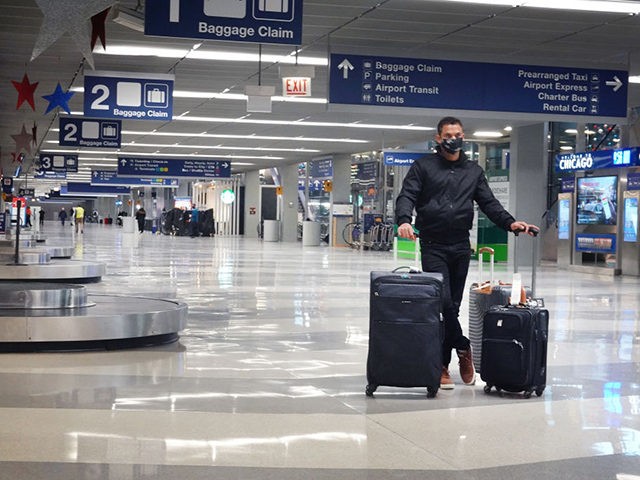Chicago’s O’Hare International Airport is one of the busiest airports in the world, but critics are calling it a “dystopian” nightmare due to the growing number of homeless people flocking there.
The number of homeless people has been steadily growing in the terminal facilities, leaving many concerned for the safety of travelers and airport employees alike as squalid shelters and sleeping vagrants have begun springing up all around the airport, especially the lower concourses.
One image posted to Twitter shows a garbage-strewn section of the hallways adjacent to the baggage pickup area on the lower levels of the terminal:
Other photos showing similar conditions throughout the airport have also emerged:
The images and comments to it prompted airport authorities to tweet that they “appreciate the feedback” and pledge that they care deeply about the “safety and security” of passengers.
The Daily Mail added a dozen more photos showing homeless people lying passed out in inappropriate places such as entryways and in the middle of hallways.
According to the New York Post, O’Hare workers have become alarmed by the growing number of homeless people — many of whom have mental health issues — and have been told to call the police. But employees noted that the police have told them they are powerless to do anything unless the workers have been assaulted by the vagrants.
Jessica Dubuar with Haymarket Center, a nonprofit that helps with the homeless at the airport, told Chicago’s CBS News that the numbers are increasing every year.
Dubuar added that when the homeless shelters are full in the city, O’Hare is a likely place to migrate to via the city’s extensive public transit system.
“A lot of folks don’t end up at the airport because that’s their goal — that is the last option they have,” she said.
“Our January at O’Hare was one of the busiest Januarys we ever had,” Dubuar told Block Club Chicago. “We are seeing more individuals and more encounters [who are] new to our system.”
The Chicago Department of Aviation released a statement to the press noting they are aware of the growing problem:
The CDA is aware of the increasing population of unsheltered individuals at O’Hare International Airport. It’s a common occurrence at this airport and airports nationwide when temperatures drop in the winter months. The Department of Family and Support Services (DFSS) and their delegate agencies continue to provide 24/7 outreach to unsheltered residents at O’Hare. Outreach professionals engage with individuals experiencing homelessness at O’Hare and conduct needs assessments. If the individual chooses to accept assistance, outreach professionals connect them with appropriate services and shelters, including necessary referrals and transportation. The CDA remains committed to working with its partners at the Chicago Fire Department (CFD), the Chicago Police Department (CPD), and other governmental and community-based organizations to support those in need and connect them with available resources in Chicago.
The increasing number of homeless are both victims of and perpetrators of violence in the Windy City. Only a few months ago, for instance, a locally renowned homeless man dubbed “the walking man,” died in Dec. from burns suffered when he was attacked seven months prior.
Last October, Chicago’s PBS station WTTW, reported there were at least 65,000 homeless people in the city, a vast increase over the mere 5,390 people reported in 2020.
That huge increase has heavily impacted O’Hare. Haymarket Center told the Chicago Tribune in January that the number of homeless they have encountered has soared.
“We saw over 600 unique individuals that we engaged with. We also had almost 14,000 encounters with them throughout the calendar year,” Jessica Dubar told the paper. The Tribune added that, compared with previous years, “that number illustrates an uptick: In 2021, there were 11,196 recorded encounters. In 2020 — the beginning of the pandemic — saw 12,270 encounters. In 2019, they recorded 9,975 encounters. In 2018, it was 8,132.”
The problem of homelessness also found a big impact on Mayor Lori Lightfoot’s 2023 proposed budget in which she added $200 million for homelessness support services, a big increase over the $52 million proposed in 2019.
Follow Warner Todd Huston on Facebook at: facebook.com/Warner.Todd.Huston, or Truth Social @WarnerToddHuston.

COMMENTS
Please let us know if you're having issues with commenting.